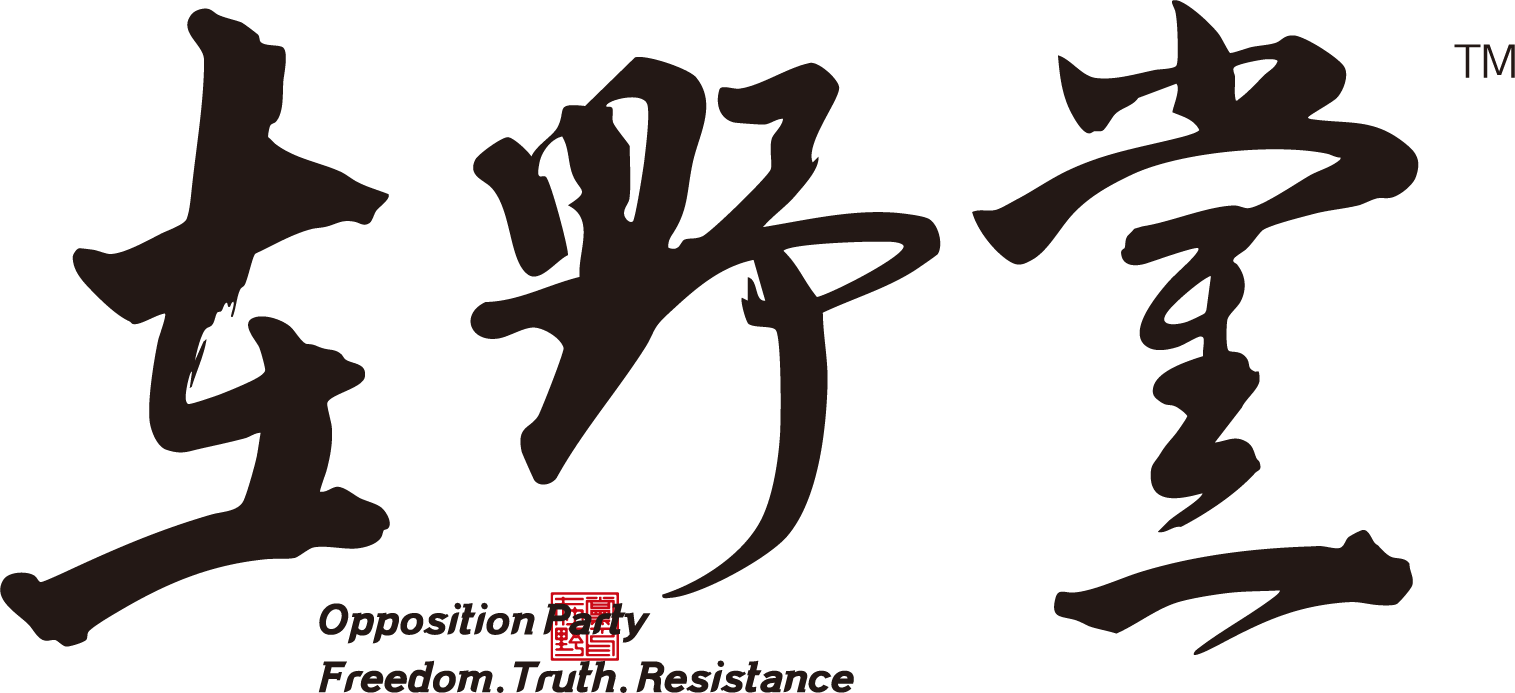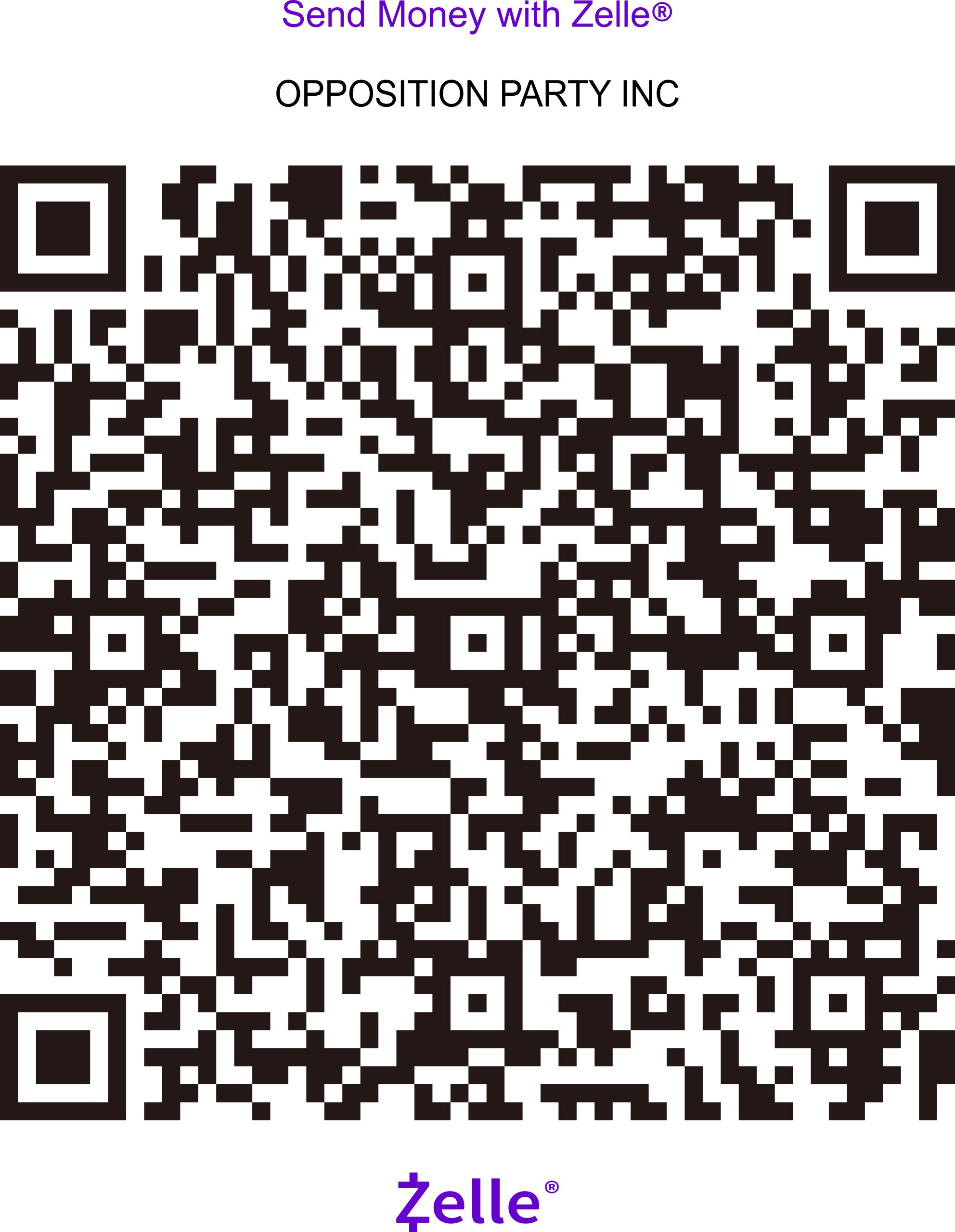作者:华言
编辑:冯仍 责任编辑:胡丽莉 翻译:吕峰
一、宣传作为权力工具
中国共产党的宣传体系并非凭空产生,而是根植于其革命历史与意识形态需求。中共成立于1921年,早期作为一支弱小的革命力量,宣传成为其动员群众、凝聚力量的核心工具。在土地革命和抗日战争时期,宣传以“唤醒民众”为目标,通过口号、标语、戏剧和歌曲等形式,将马克思主义的阶级斗争理念与民族救亡的诉求结合,成功塑造了“工农联盟”与“民族英雄”的形象。然而,这种看似“启发民智”的宣传,从一开始就带有强烈的目的性:通过简化复杂的政治理念,制造对立情绪,动员群众支持革命。
-rId6-800X460.jpeg)
早期宣传的“动员”本质上是一种单向灌输,而非双向沟通。中共通过控制信息传播,筛选有利于自身合法性的叙事,压制异见声音。1920年代的“反帝反封建”宣传,将复杂的社会问题简化为“帝国主义”和“封建地主”的罪恶,忽略了社会变革的多维性。这种二元对立的叙事策略,虽然在短期内有效凝聚了革命力量,但也埋下了思想单一化的种子,为日后宣传体系的高度集中化奠定了基础。
随着1949年中华人民共和国的建立,宣传从革命工具转变为国家治理的核心机制。中共将宣传定义为“党的生命线”,通过中央宣传部等机构,将意识形态灌输嵌入国家机器的每个角落。宣传不再仅仅是动员工具,而是成为维护政权合法性、塑造社会共识的权力杠杆。这种转变标志着宣传从“启发”走向“控制”,其目标从动员群众转向统一思想,压制多元意见。
中共宣传学的理论基础源于马克思主义,马克思主义宣传观强调“阶级意识”的觉醒,认为宣传应教育无产阶级认识自身的历史使命。马克思设想的宣传是启发性的,旨在通过理性讨论唤醒工人阶级的自我意识,而非自上而下的强制灌输。列宁主义对宣传的改造强调党作为“先锋队”必须通过宣传引导群众,赋予宣传强烈的组织性和纪律性。中共在继承列宁主义宣传观的基础上,进一步将其本土化,融入了中国传统政治文化中的“教化”理念。儒家传统强调“以德治国”,通过道德教化塑造社会秩序,中共则将这一理念转化为“以意识形态治国”,通过宣传灌输党的价值观。
从理论上讲,宣传作为一种沟通形式,应当以事实为基础,通过理性说服实现共识。然而,中共宣传体系的理论基础却建立在对权力的绝对服从,而非对真理的追求。其核心逻辑是:党的意志代表人民的意志,因此宣传的任务不是启发讨论,而是确保公众接受党的叙事。
二、宣传金字塔体系
1.中央宣传部:信息控制
中央宣传部作为中共宣传体系的核心机构,是信息控制与意识形态管理的最高权力中枢。其职能涵盖制定宣传政策、指导媒体运作、审查信息内容以及协调全国宣传工作。表面上,中宣部以“引导舆论”为目标,但其核心任务是通过集中化控制,确保所有信息输出符合党的政治目标。
中宣部的权力集中体现在其对媒体、出版、教育和文化领域的全面监管。新闻出版署和国家广播电视总局等机构名义上独立,实则受中宣部直接领导。中宣部通过发布“宣传指令”和“敏感词列表”,对媒体报道的内容、语气甚至用词进行细致管控。
中宣部的运作具有明显的“黑箱”特征。其决策过程不透明,缺乏公众监督,宣传政策的制定往往基于政治需求而非事实依据。中宣部通过延迟信息发布、控制报道口径,优先维护政权形象而非公众知情权。
2.地方宣传的执行:忠诚
地方宣传机构作为中宣部的下属执行单位,负责将中央的宣传政策落实到具体实践中。每个省级、市级、县级党委都设有宣传部门,形成一个自上而下的垂直管理体系。地方宣传机构的任务包括组织本地媒体报道、开展群众宣传活动以及监控区域内舆论动态。地方宣传机构必须严格遵循中宣部的指令,确保本地舆论与中央保持一致。地方媒体在报道重大政策时,必须使用新华社通稿或中宣部指定的措辞,任何偏离都可能被视为政治错误。这种高度统一的要求,限制了地方根据实际情况调整宣传策略的空间,导致宣传内容往往与公众需求脱节。
3.宣传垄断:压制多元声音
宣传部门与政府部门、司法机构乃至国有企业形成了一个紧密的协同网络,确保宣传政策在社会各领域得到贯彻。这种党政协同的核心目标是实现宣传垄断,压制任何可能挑战官方叙事的多元声音。在制度设计上,宣传部门与政府部门的联动通过“党政一体”机制实现。教育部门负责将党的意识形态融入教材,公安部门配合监控网络言论,文化部门审查文艺作品的内容。这种全方位的协同控制,确保了学校、网络、媒体及公共场所的信息环境均受党主导。官方叙事占据绝对主导地位,独立媒体、公民记者和非官方信息来源被边缘化甚至消灭。这种单一信息环境不仅限制了公众的知情权,还削弱了社会对复杂问题的讨论能力。这种垄断以牺牲思想多样性为代价,扼杀了社会创新与批判性思考。
4.民间“自愿”宣传:被操控的群众运动
除了官方机构,中共宣传体系还善于动员民间力量参与宣传,形成所谓的“自愿”宣传。然而这种“自愿”往往是被操控的结果,背后隐藏着权力结构的强制性影响。民间宣传的典型形式包括“五毛党”(网络评论员)、志愿者组织以及群众性宣传活动。这些活动表面上由民间自发组织,实则受宣传部门的直接指导和资助。
三、叙事操控:从“正面宣传”到选择性真相
中共宣传体系的核心任务是通过精心设计的叙事,塑造有利于政权合法性和社会稳定的公共认知。这种叙事操控以“正面宣传”为名,强调突出党的成就、民族复兴和社会和谐,但其本质是通过选择性真相,构建单一的、符合官方利益的现实版本。
“正面宣传”的核心策略是筛选信息,放大有利事实,掩盖或淡化不利信息。这种选择性叙事通过媒体、教科书和公共活动反复强化,旨在将党的形象与国家进步绑定。
情绪动员是中共宣传体系的重要策略,通过激发恐惧、民族主义和集体认同等强烈情绪,引导公众行为和认知。民族主义是情绪动员的另一核心工具。宣传部门通过突出民族自豪感,将党的领导与国家强盛绑定。这种民族主义动员虽然增强了内部凝聚力,却也导致了狭隘的排外情绪。这种策略虽然在短期内有效,却以牺牲理性讨论和社会包容性为代价。
恐惧动员是宣传中常用的手法,通过制造外部威胁或内部危机感,促使公众依靠官方叙事寻求安全感。宣传常将西方国家描绘为“敌对势力”,通过“反华阴谋论”激发公众警惕。
1.传统媒体的从属角色
传统媒体,包括报纸、电视和广播,在中共宣传体系中长期扮演“党喉舌”的角色。《人民日报》、中央电视台等核心媒体直接受中央宣传部领导,其内容生产严格遵循党的政治目标。传统媒体的从属性体现在内容生产的严格管控上。新闻报道必须使用新华社通稿或中宣部指定的措辞,记者和编辑的创作空间被压缩到最低限度。
2. 新媒体的控制与利用
随着互联网和移动设备的普及,中共宣传体系迅速拥抱新媒体平台,如微信、微博、抖音等,将其作为舆论引导的新阵地。表面上,新媒体以互动性和多样性吸引公众,但其核心仍是官方叙事的延伸,通过算法推荐和内容管控实现精准化的宣传。新媒体的利用体现在其“亲民化”策略上。官方账号通过短视频、表情包和直播等形式,包装严肃的宣传内容,以迎合年轻受众。
3.审查与监控
审查与监控是中共宣传体系的核心机制,技术的发展为其提供了更高效的工具。网络审查通过防火长城、关键词过滤和人工审核,限制敏感信息的传播;监控则通过大数据和人工智能,追踪公众的网络行为。批判性分析表明,这些机制以技术赋能信息封锁,严重侵蚀了言论自由和隐私权。
网络审查的规模和精度在全球范围内罕见。防火长城屏蔽了大量海外网站,如谷歌、YouTube和维基百科,确保公众只能接触国内受控的信息环境。关键词过滤系统则实时监控社交媒体内容,自动删除或屏蔽涉及政治敏感话题的帖子。网络监控则通过大数据和人工智能实现精准化管理。宣传部门与公安部门合作,部署了“天网”监控系统和社交媒体用户行为分析工具。
四、全球传播的野心:话语争夺 中共宣传体系近年来将目光投向全球,试图通过国际传播提升中国的影响力,争夺国际话语权。其核心战略被概括为“讲好中国故事”,旨在通过传播正面形象,反驳西方媒体的“负面报道”,并塑造一个“和平崛起”的中国形象。“讲好中国故事”战略自2013年提出以来,成为中共外宣的核心指导思想。官方通过国际会议、媒体报道和文化活动,推广“中国模式”的成功,如“一带一路”倡议的“合作共赢”叙事和抗疫期间的“人类命运共同体”理念。中共外宣媒体,如中国国际电视台、《中国日报》及新华社国际版,是其国际宣传的核心工具。这些媒体以多语种形式向全球传播中国视角,试图打破西方媒体的“信息垄断”。海外社交平台的利用是外宣媒体的另一尝试。中共通过在X、YouTube等平台开设官方账号,发布短视频和图文内容,试图直接接触国际受众。
面对国际舆论的批评,中共宣传体系采取了多重策略,包括反驳、转移焦点和主动塑造叙事,但这些策略因其防御性和操控性,效果有限。反驳策略通过直接否认或驳斥西方媒体的报道,试图扭转负面形象。转移焦点是另一常见策略,通过突出其他议题分散注意力。主动塑造叙事则通过国际媒体合作和舆论引导,试图抢占话语权。
五、宣传的代价
中共宣传体系以其高效的组织架构和资源投入,在短期内实现了强大的舆论控制效果。官方通过媒体、活动和网络平台的密集宣传,确保核心叙事深入社会各个角落。但这种效果更多是“虚假繁荣”,其表面成功掩盖了长期隐患。首先,强制性宣传导致公众的被动接受,缺乏真正的内心认同。其次,宣传的过度正面引发了公众的审美疲劳。诸如“正能量”“中国梦”等口号的反复使用,使部分受众产生逆反心理,降低宣传的说服力。再次,虚假繁荣掩盖了宣传体系的脆弱性。在信息时代,公众通过非官方渠道获取信息的可能性增加,官方叙事的可信度受到挑战。例如,2020年新冠疫情期间,民间信息通过社交媒体传播,揭露了官方宣传中未提及的物资短缺和基层混乱,这种“信息失控”的风险表明,宣传的短期效果难以转化为长期的信任资本。
中共宣传体系通过强制性叙事和信息控制,塑造了高度统一的思想环境,但这一过程以思想单一化和社会创造力的抑制为代价,压制了多元观点和个体表达,导致社会在文化、学术和创新领域的活力下降。
Basic Knowledge of CCP Propaganda
Abstract: This article systematically reviews the development and characteristics of the Chinese Communist Party’s (CCP) propaganda system: from a mobilization tool during the revolutionary period, to a governance mechanism after the establishment of the PRC, and finally to today’s pyramid structure and global external propaganda strategy. The article reveals that its essence lies in maintaining regime legitimacy through information monopoly and emotional manipulation, but at the cost of ideological uniformity and suppressed social vitality.
Author: Hua Yan Editor: Feng Reng Responsible Editor: Hu Lili Translation: Lyu Feng
1. Propaganda as a Tool of Power
The CCP’s propaganda system did not emerge out of thin air; it is rooted in its revolutionary history and ideological needs. Founded in 1921, the CCP was initially a small revolutionary force, and propaganda became a core tool for mobilizing the masses and consolidating strength. During the Land Revolution and the Anti-Japanese War, propaganda aimed to “awaken the people” by combining Marxist class struggle concepts with the call for national salvation through slogans, banners, theater, and songs. This successfully shaped the image of the “worker-peasant alliance” and “national heroes.”
However, this seemingly “enlightening” propaganda was highly purposeful from the outset: by simplifying complex political ideas and creating oppositional emotions, it mobilized the masses to support the revolution.
-rId6-800X460.jpeg)
Early CCP propaganda was essentially a one-way indoctrination rather than a two-way communication. By controlling the flow of information, the CCP selectively promoted narratives favorable to its legitimacy while suppressing dissenting voices. In the 1920s, campaigns such as the “anti-imperialist, anti-feudal” propaganda simplified complex social problems into the evils of “imperialism” and “feudal landlords,” ignoring the multidimensional nature of social transformation. Although this binary narrative strategy effectively consolidated revolutionary forces in the short term, it also planted the seeds of ideological uniformity, laying the foundation for the later highly centralized propaganda system.
With the founding of the People’s Republic of China in 1949, propaganda shifted from a revolutionary tool to a core mechanism of state governance. The CCP defined propaganda as the “lifeline of the Party,” embedding ideological indoctrination into every corner of the state apparatus through institutions such as the Central Propaganda Department. Propaganda was no longer merely a mobilization tool but became a lever of power to maintain regime legitimacy and shape social consensus. This shift marked a transition from “enlightenment” to “control,” with its goal moving from mobilizing the masses to unifying thought and suppressing pluralistic opinions.
The theoretical foundation of CCP propaganda lies in Marxism, which emphasizes the awakening of “class consciousness” and the education of the proletariat about their historical mission. Marx envisioned propaganda as an enlightening process aimed at awakening self-awareness in the working class through rational discussion, rather than a top-down imposition. Leninist adaptation stressed that the Party, as the “vanguard,” must guide the masses through propaganda, giving it strong organizational and disciplinary characteristics. Building on this Leninist foundation, the CCP further localized propaganda, integrating it with the Chinese traditional political concept of “moral education” (教化). Whereas Confucianism emphasized governing through virtue to shape social order, the CCP transformed this into “governing through ideology,” instilling Party values through propaganda.
Theoretically, propaganda as a form of communication should be fact-based and use rational persuasion to build consensus. However, the CCP’s propaganda system is founded on absolute obedience to power rather than a pursuit of truth. Its core logic is that the Party’s will represents the will of the people; therefore, propaganda’s task is not to stimulate discussion, but to ensure public acceptance of the Party’s narrative.
II. The Propaganda Pyramid
1. Central Propaganda Department: Information Control
The Central Propaganda Department (CPD) is the core institution of the CCP propaganda system, serving as the highest authority for information control and ideological management. Its responsibilities include formulating propaganda policies, guiding media operations, censoring content, and coordinating nationwide propaganda work. While it ostensibly aims to “guide public opinion,” its core mission is to ensure all information output aligns with Party objectives through centralized control.
The CPD’s concentrated power is evident in its comprehensive oversight of media, publishing, education, and culture. Institutions such as the National Press and Publication Administration and the National Radio and Television Administration, although nominally independent, are directly subordinate to the CPD. The CPD exercises meticulous control through “propaganda directives” and “sensitive word lists,” regulating not only content but also tone and language.
The CPD operates as a “black box,” with opaque decision-making processes and no public oversight. Propaganda policies are often based on political necessity rather than factual evidence. By delaying the release of information and controlling reporting standards, the CPD prioritizes regime image over public right to know.
2. Local Propaganda Implementation: Loyalty
Local propaganda offices, subordinate to the CPD, are tasked with implementing central policies in practice. Every provincial, municipal, and county-level Party committee has propaganda departments, forming a top-down vertical management system. Their responsibilities include organizing local media reports, conducting public outreach, and monitoring regional public opinion. Local offices must strictly follow CPD directives to align local discourse with central mandates. When reporting major policies, local media must rely on Xinhua press releases or CPD-specified wording; deviations may be considered political errors. This strict uniformity limits local adaptation, often disconnecting propaganda from public needs.
3. Propaganda Monopoly: Suppression of Plurality
Propaganda departments coordinate closely with government agencies, the judiciary, and state-owned enterprises to ensure Party narratives permeate all sectors of society. The core goal of this party-government collaboration is to establish a propaganda monopoly and suppress any voices that could challenge the official narrative. Structurally, this is achieved through the “party-government integration” mechanism: education embeds Party ideology into curricula, police monitor online discourse, and cultural departments censor artistic content. This all-encompassing control ensures that schools, the internet, media, and public spaces are dominated by Party-led narratives. Independent media, citizen journalists, and unofficial sources are marginalized or eliminated. This monopolization, achieved at the expense of ideological diversity, stifles social innovation and critical thinking.
4. Civil “Voluntary” Propaganda: Manipulated Mass Participation
The CCP propaganda system also mobilizes civilian forces to participate in “voluntary” propaganda, which is often tightly controlled. Typical forms include online commentators (the “50-cent party”), volunteer organizations, and mass campaigns. Although these activities appear spontaneous, they are directly guided and funded by propaganda departments.
III. Narrative Control: From “Positive Propaganda” to Selective Truth
The CCP’s propaganda system seeks to shape public perception to reinforce regime legitimacy and social stability. Narrative control, under the guise of “positive propaganda,” emphasizes Party achievements, national rejuvenation, and social harmony, but its essence lies in selective truth-telling, constructing a singular reality that serves official interests.
The core strategy of “positive propaganda” is to filter information, amplify favorable facts, and conceal or downplay unfavorable ones. This selective narrative is repeatedly reinforced through media, textbooks, and public events, linking Party image to national progress.
Emotional mobilization is another key tactic, using fear, nationalism, and collective identity to guide public perception and behavior. Nationalism strengthens internal cohesion but fosters narrow-minded xenophobia. Fear is also leveraged by portraying external threats or internal crises, compelling citizens to rely on official narratives. Western countries are often depicted as “hostile forces,” with “anti-China conspiracy theories” promoting vigilance.
1. Subordinate Role of Traditional Media
Traditional media, including newspapers, television, and radio, serve as the Party’s “mouthpiece.” Core outlets such as People’s Daily and CCTV are directly controlled by the CPD, producing content strictly aligned with Party objectives. Journalists and editors have minimal creative freedom; news must use Xinhua releases or CPD-approved wording.
2. Control and Use of New Media
With the rise of the internet and mobile devices, the CCP quickly embraced platforms like WeChat, Weibo, and Douyin as new fronts for opinion guidance. While these platforms appear interactive and diverse, they extend official narratives through algorithmic recommendations and content control. Official accounts use short videos, stickers, and livestreams to make serious propaganda appealing to younger audiences.
3. Censorship and Surveillance
Censorship and surveillance are core mechanisms. Internet filtering, the Great Firewall, keyword blocking, and human review restrict sensitive information. Big data and AI track online behavior. These mechanisms enforce information control, severely limiting free speech and privacy. The Great Firewall blocks sites like Google, YouTube, and Wikipedia, while keyword systems monitor social media in real-time. Surveillance networks like “Skynet” further enforce compliance.
IV. Global Ambitions: Narrative Competition
Recently, the CCP has expanded its propaganda globally, seeking to enhance China’s influence and international discourse power. The strategy “telling China’s story well” promotes a positive image, counters Western criticism, and presents China as a “peaceful rising” power. Since 2013, this strategy has guided external propaganda. Key tools include China Global Television Network, China Daily, and Xinhua International Edition, broadcasting Chinese perspectives in multiple languages. Social media platforms like X and YouTube are also used to reach international audiences directly.
In response to criticism, the CCP uses rebuttals, distraction, and proactive narrative shaping. These defensive and manipulative tactics have limited effectiveness. Rebuttals deny or refute Western reports; distraction shifts focus to other topics; proactive shaping attempts to dominate discourse through media collaboration and guided messaging.
V. The Costs of Propaganda
The CCP propaganda system, with its highly organized structure and resources, achieves strong short-term control over public opinion. Intensive coverage through media, events, and online platforms ensures the core narrative reaches all corners of society. However, this “illusory prosperity” hides long-term risks. Coercive propaganda fosters passive acceptance rather than genuine belief. Overuse of positive messaging, such as slogans like “positive energy” or the “Chinese Dream,” can provoke resistance, reducing persuasive impact.
Moreover, the system’s artificial success masks its vulnerabilities. In the information age, citizens access unofficial channels, challenging the credibility of official narratives. For instance, during the 2020 COVID-19 pandemic, social media revealed shortages and local disorder ignored in official propaganda, showing the short-term effects cannot be easily converted into lasting trust.
By enforcing unified narratives and controlling information, the CCP propaganda system suppresses diverse viewpoints and individual expression, stifling creativity and vitality in cultural, academic, and innovative fields.


我的兄弟邹巍-rId6-1270X844.jpeg?w=218&resize=218,150&ssl=1)


